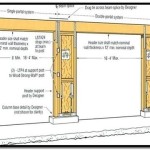Standard Garage Door Sizes Chart By Size And Weights 2024
Selecting the appropriate garage door involves carefully considering various factors, including the size and weight. The standard garage door sizes chart provides a helpful reference for determining the right dimensions to accommodate different vehicles and architectural styles. In 2024, the availability and specifications of garage doors remain generally consistent with established norms, although minor variations may exist due to specific manufacturer designs or custom orders. Understanding these standard sizes and their associated weight ranges is crucial for ensuring proper installation and safe operation.
This article will explore the standard garage door sizes, categorized by width and height, and provide estimated weight ranges for each size. It will also delve into considerations for selecting the appropriate size and weight, as well as relevant technical specifications. This information aims to assist homeowners, builders, and contractors in making informed decisions when choosing and installing new garage doors.
Understanding Standard Garage Door Widths
The width of a garage door is a primary determinant of the number of vehicles that can be parked inside and the overall accessibility of the garage space. Standard garage door widths are designed to accommodate common vehicle sizes and provide adequate clearance for entry and exit. The most prevalent standard widths are single-car and double-car configurations.
Single-Car Garage Doors: These doors are typically designed for one vehicle and range in width from 8 feet to 10 feet. The most common width is 9 feet. An 8-foot wide door is often used in older homes or smaller garages where space is limited. A 10-foot wide door provides slightly more clearance and is suitable for larger vehicles or areas where maneuvering space is preferred. The standard height for single-car garage doors is often 7 feet, though 8-foot heights are also available.
Double-Car Garage Doors: Also referred to as two-car garage doors, these are designed to accommodate two vehicles side-by-side. The standard widths for double-car garage doors range from 12 feet to 18 feet. The most common widths are 16 feet and 18 feet. A 12-foot wide door may be used in situations where space is restricted, but it can make parking two vehicles simultaneously challenging. A 16-foot wide door provides adequate space for most mid-size vehicles, while an 18-foot wide door offers ample space, particularly for larger trucks or SUVs. As with single-car doors, the standard height is generally 7 feet or 8 feet.
It is essential to measure the existing opening accurately before selecting a new garage door. The width of the opening should be sufficient to accommodate the chosen door size, with allowances for the door tracks and hardware. Obstructions along the sides of the opening might further limit the choice of sizes available.
Exploring Standard Garage Door Heights
The height of a garage door is crucial for accommodating the vertical dimensions of vehicles and other items stored in the garage, such as recreational equipment or storage racks. Standard garage door heights typically range from 7 feet to 8 feet although taller doors are also available for specific needs.
7-Foot Garage Doors: This is the most common standard height for both single-car and double-car garage doors. It is generally sufficient for accommodating most passenger vehicles, including sedans, coupes, and smaller SUVs. However, taller vehicles, such as trucks or vans, may require a taller garage door.
8-Foot Garage Doors: These taller doors are often preferred for homeowners with larger vehicles, such as trucks, SUVs, or recreational vehicles. They also provide additional headroom inside the garage, which can be beneficial for storage and maneuvering. Eight-foot garage doors are increasingly popular in newer constructions to cater to the growing size of vehicles.
Custom Heights: While 7-foot and 8-foot heights are standard, custom garage door heights are also available to accommodate specific needs. These custom heights can range from 9 feet to 12 feet or even taller, depending on the application. Custom-height doors are typically used for commercial garages, workshops, or residential garages that house oversized vehicles or equipment. Ordering a custom size usually involves higher costs and longer lead times compared to standard-sized doors.
When determining the appropriate garage door height, consider the tallest vehicle that will be regularly parked in the garage, as well as any potential future vehicle purchases. Also, factor in the clearance needed for any overhead storage or equipment inside the garage.
Garage Door Weights and Material Considerations
The weight of a garage door significantly affects the choice of garage door opener, springs, and other hardware components. Garage door weight is primarily determined by the material used in its construction, as well as its dimensions.
Material Types and Their Weights: Garage doors are commonly constructed from materials such as steel, wood, aluminum, and fiberglass. Each material has varying weight characteristics.
Steel Doors: Steel garage doors are among the most popular due to their durability and relatively low cost. A standard single-layer steel door, measuring 9 feet wide and 7 feet high, typically weighs between 80 and 150 pounds. A double-layer steel door with insulation can weigh between 150 and 250 pounds. Triple-layer steel doors, which feature insulation and an additional steel layer for added strength and insulation, can weigh between 200 and 350 pounds.
Wood Doors: Wood garage doors offer a classic aesthetic appeal but are heavier than steel doors. A solid wood door of the same dimensions (9 feet wide and 7 feet high) can weigh between 200 and 400 pounds, depending on the type of wood used and the door's thickness. Wood doors require more maintenance to prevent warping, rotting, and insect damage.
Aluminum Doors: Aluminum garage doors are lightweight and resistant to rust, making them suitable for coastal environments. A standard aluminum door can weigh between 75 and 125 pounds. However, aluminum doors are more susceptible to dents and damage compared to steel doors.
Fiberglass Doors: Fiberglass garage doors are relatively lightweight and offer good insulation properties. They can be designed to mimic the appearance of wood, providing an aesthetic alternative to solid wood doors. A standard fiberglass door weighs approximately 75 to 150 pounds.
Weight Considerations for Door Openers and Springs: The weight of the garage door is a critical factor in selecting the appropriate garage door opener. Garage door openers are rated for different weight capacities, and choosing an opener that is not rated for the door's weight can lead to premature failure or safety hazards. Similarly, the springs that counterbalance the door's weight must be properly matched to the door's weight. Incorrectly sized springs can cause the door to be difficult to open or close, or even pose a risk of the door falling unexpectedly. Consult with a professional installer to ensure that the opener and springs are properly matched to the door's weight.
The information contained in this section is a general guideline, and it's essential to consult with the manufacturer's specifications for the exact weight of a specific garage door model. The weight can vary depending on the exact construction, materials used, and insulation added to the door.
Beyond the standardized dimensions, specific components and building configurations play a vital role in the selection and installation process. For example, structural elements such as the header size above the garage door opening and the sideroom available impact the size of the door that can be installed. Also, the type of track system used – standard, low headroom, or high lift – will dictate certain clearance requirements and influence the choice of door height.
Insulation also significantly affects the overall performance of the garage door. Insulated doors help regulate the temperature inside the garage, reducing energy costs and improving comfort. The level of insulation is measured by its R-value, which indicates its resistance to heat flow. Higher R-values indicate better insulation. Common insulation materials include polystyrene, polyurethane, and fiberglass. Adding insulation increases the weight of the door, necessitating adjustments to the opener and spring system.
Another aspect to consider is the aesthetic design of the garage door. Styles vary widely, from traditional raised-panel designs to contemporary flush or carriage-house styles. The material, color, and finish of the door can be chosen to complement the overall architectural style of the home. The presence of windows can add natural light to the garage but also affects the door's weight and insulation.
Proper installation of the garage door is crucial for ensuring its safe and reliable operation. It is generally recommended to hire a professional installer who has the expertise and equipment to handle the job correctly. A professional installer will ensure that the door is properly aligned, balanced, and secured, and that all safety features are functioning correctly. Regular maintenance, including lubrication of moving parts and inspection of the springs and cables, is also essential for prolonging the life of the garage door.
Addressing safety concerns is paramount when dealing with garage doors. Modern garage door openers are equipped with safety features such as automatic reversal systems that detect obstructions and stop the door from closing. Photo-eye sensors, which create an invisible beam across the door opening, prevent the door from closing if an object breaks the beam. These safety features must be properly installed and maintained to prevent accidents and injuries. Homeowners should regularly test these safety features and address any issues promptly.
In summary, selecting the appropriate garage door size and weight involves careful consideration of various factors, including the vehicle size, garage dimensions, material type, insulation levels, and safety features. By understanding the standard size options and weight ranges, as well as the technical specifications for different door models, homeowners and builders can make informed decisions to ensure the safe and efficient operation of their garage doors.

Garage Door Width Guide Optimal Sizes For Vehicles Storage

What Are The Standard Garage Door Sizes Dreifuss Fireplaces

What Are The Standard Garage Door Sizes

What Are The Standard Garage Door Sizes

Garage Door Width Guide Optimal Sizes For Vehicles Storage
Garage Door Size Chart

Therm O Door Steel Craft

Garage Door Weight Vs Spring Size Heritage

What Are The Standard Garage Door Sizes

Garage Door Tracks What To Know Before Purchasing
Related Posts








